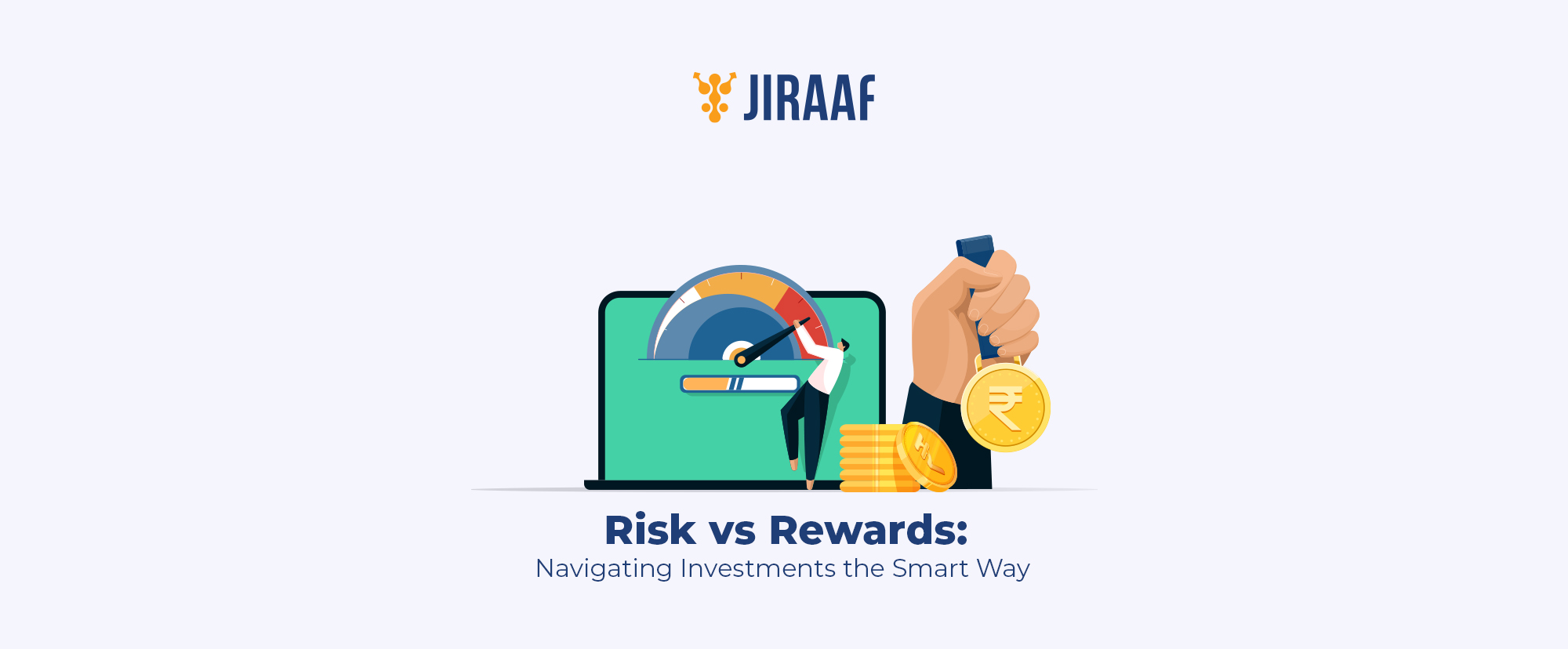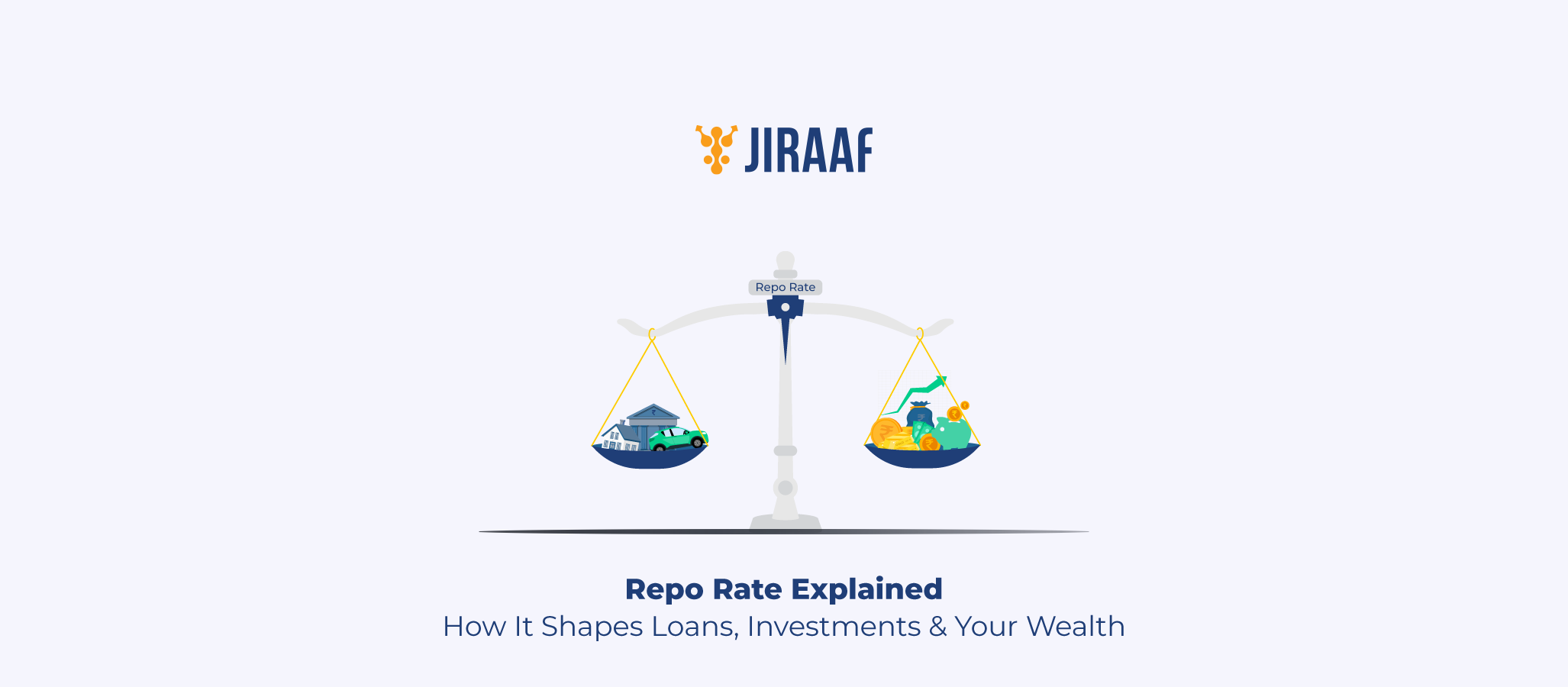Investing often entails a balancing act between risk and reward. The question many ask is: how do you strike the right balance?
Investing, by its nature, involves both risks and rewards, regardless of the asset type. While terms like “high-risk-high-reward” and “low-risk-low-reward” often apply, it’s critical to look beyond these simple correlations.
Fixed-income investments, generally viewed as safer, come with lower risks and, as a result, tend to offer lower returns compared to instruments like equities. Although, in the world of investing, no asset class is entirely risk-free.
To make the most of your investments, you need to build a portfolio balancing risk and reward. This is where diversification and careful portfolio management come into play, ensuring that with all your investments, risk is accounted for and managed well.
Understanding Risk in Investing
Before we tell you how to balance risk and rewards in investing, let’s understand what risks in investing are.
At its core, risk refers to the uncertainty surrounding the returns on your investments. Every investment, no matter how secure it seems, carries some level of risk. The key to smart investing lies in understanding these risks and finding ways to manage them effectively.
Let’s have a look at the types of investment risks involved with investments in general:
Types of Investment Risks
Market Risk
This is the risk that external factors have on the entire financial market – like political instability or natural disasters, which could negatively affect your investments.
For instance, imagine you own shares in a stable and profitable company. Still, due to a natural disaster, the entire industry’s supply chain is disrupted, and the shares of all the companies in that sector, not just yours, suffer from reduced stock prices. This can result in losses for you and all other investors associated with the sector.
Interest Rate Risk
Changes in interest rates can affect the value of fixed-income investments which in turn can even impact the value of equities. When interest rates rise, the prices of existing bonds typically fall, making it harder to sell them without incurring losses. FDs become unattractive. Typically, the performance of the equity market is inversely proportional to the interest rate movement.
For instance, you buy a bond with an interest rate of 5%. Next year, new bonds with 6% interest are released. Your bond’s resale value drops because it gives smaller yields; if you tried to sell it, you probably wouldn’t get as much as you paid.
Credit Risk
This risk arises when the issuer of a bond does not meet its obligations, such as paying interest or repaying the principal. Instruments with higher credit ratings, such as AAA-rated bonds, carry lower credit risk but offer lower returns.
For instance, if you buy stocks of a company but it defaults on payments or goes bankrupt, you might lose part or all your investment.
Inflation Risk
Inflation erodes the real value of your returns. If inflation outpaces the return on your investment, your purchasing power diminishes in the long run, even though you may be earning some profits at the present.
For instance, if you earn a 4% return on your investment but the inflation is 5%, you effectively lose purchasing power in the long run.
Liquidity Risk
Some instruments are less liquid, meaning they are harder to sell before maturity without incurring a loss. Often some bonds and equity funds come with exit load for selling them earlier than a stipulated time frame.
For example, if you own a penny stock or a small-cap stock that is not traded as often in the market, you might have difficulty selling it and might even incur losses while doing so.
Reinvestment and Call Risk
These involve the possibility of having to invest your returns at a lower interest rate than you have originally earned.
Reinvestment risk refers to the situation where you need to re-invest your interest or principal returns from one investment into another, but the market conditions are less favourable. If the current market rates are lower than your original bond’s interest rate, your overall returns will decline.
Call risk involves ‘callable’ investments, which can be redeemed by the issuer. When interest rates decrease, some issuers can call their shares and reissue them to take advantage of the lesser interest. This results in a loss for investors.
Duration Risk
Long-term investments are more sensitive to interest rate changes. The longer the duration, the more an investment’s price is likely to fluctuate when interest rates change.
Imagine investing in a long real-estate project. If market conditions or interest rates change during the gestation period of your investment, their value could drop.
These are the major types of investment risks investors face in the market to gain rewards. Now you must be wondering, “What is the relationship between risk and rewards in investing?”, right? Well, before we get to that, let’s learn what rewards are.
What are Rewards in Investing?
Rewards refer to the potential gain investors can earn from their investments over time. Rewards can take various forms and are often directly related to the level of risk associated with the investment.
Understanding the relationship between risk and reward is crucial for any investor, as it helps in making informed decisions aligned with their financial goals.
In general, the greater the risk associated with an investment, the higher the potential reward. This concept is known as the risk-reward trade-off.
For instance, investing in stocks is generally considered riskier than investing in government bonds. However, while stocks can be volatile, they also have the potential for significant capital appreciation. On the other hand, fixed-income securities like bonds typically offer lower returns but come with reduced risk.
Some types of investment rewards are:
Capital Gains
Capital gains occur when the value of an investment increases over time, allowing investors to sell it for a profit.
For example, if you buy shares of a successful tech company at ₹500 and later sell them for ₹800, your capital gain would be ₹300 per share. This potential for capital appreciation is a strong motivation for many equity investors.
Dividends
Some companies distribute a part of their earnings to shareholders in the form of dividends.
For example, if you own shares in a well-established company, you may receive regular dividend payments, providing a steady income stream in addition to any capital gains. This is particularly appealing for income-focused investors.
Interest
Interest is earned on fixed-income investments, such as fixed deposits or bonds.
For instance, if you invest in a fixed deposit with a bank offering 6% interest per annum, you receive regular interest payments. They provide a stable and predictable income source.
Rental Income
Real estate investments can yield rewards in the form of rental income.
For example, if you invest in a residential property in a growing market and rent it out, the monthly rental income can provide a consistent cash flow. This income can help cover mortgage payments or contribute to other investments.
What is the Relationship Between Risk and Rewards in Investing?
Risk and reward in investing are like two sides of the same coin. You cannot have one without the other. The risk-reward trade-off is a fundamental principle of investing, which implies that to achieve higher returns, you must be willing to accept a greater degree of risk.
For instance, during market fluctuations, stocks can experience significant price swings, presenting both risks and opportunities. On the other hand, more conservative investments like government bonds offer lower returns but also come with reduced risk.
You must evaluate your risk tolerance, investment horizon, and financial goals to determine the right balance between risk and reward. For example, if you have a long time horizon, you may opt for a higher allocation to equities, accepting the inherent volatility for potential higher returns. A retiree, on the other hand, might prioritize capital preservation and income diversification, leaning more towards fixed-income investments.
Thus, factors like your willingness to take on risk often dictate your potential for rewards. However, the sustainable thing to do is to have a well-diversified portfolio to mitigate the risks while optimizing returns.
Factors that Influence Risk and Rewards
Before discussing strategies for balancing risk and rewards in investing, we need to know the several factors affecting the risk and reward dynamic of your investments. These include:
1. Economic Conditions
The country’s economic condition significantly affects investment prices and interest rates.
Factors such as inflation, fiscal policy, GDP growth, and a robust economic policy can result in higher interest rates, which in turn lead to lower investments since the interest rate risk increases.
2. Monetary Policy
The Reserve Bank of India (RBI) enforces a monetary policy for the country, which includes the repo rate.
Any changes in the repo rate impact the interest rates offered and can either raise or lower risks associated with fixed-income investments.
3. Credit Ratings
Higher-rated companies, which are considered financially stable, typically have lower risk and can offer dividends and consistent performance. Similarly, lower-rated companies may present higher potential rewards, such as capital gains, but come with a risk of underperformance or bankruptcy.
4. Market Sentiment
Global events, political changes, and overall market sentiment can drive prices across various asset classes, including stocks, real estate, and commodities.
For example, positive news about a company or sector can lead to increased investor interest and rising stock prices, while negative sentiment can cause widespread selling and reduced valuations, affecting potential gains.
5. Duration
Generally, longer-duration investments – such as long-term stocks or real estate- are more sensitive to market fluctuations and economic changes. While they offer the potential for higher returns over time, they also carry increased risk due to market volatility. Shorter-duration investments may provide more stability but often yield lower returns.
Strategies for Balancing Risk and Rewards
Balancing risk and reward in investing requires a thoughtful, strategic approach. Here are some key strategies that can help you:
1. Diversification
By investing in a mix of assets – such as government securities, corporate bonds, and other fixed-income investments – you can spread your risk. When one asset class underperforms, another may help you keep your portfolio stable.
2. Dollar-Cost Averaging
Another way to reduce the impact of market volatility is dollar-cost averaging—the practice of regularly investing a fixed amount of money into a particular instrument, irrespective of its price. By investing consistently over time, you can buy more units when prices are low and fewer when they are high, leading to a more favourable average cost per unit.
3. Rebalancing Your Portfolio
Periodically reviewing your asset allocation to keep the risk involved under check is one strategy to help you balance risk and rewards in investment.
For example, if your equities have grown quite a bit, reallocate some gains into stable fixed-income assets like bonds or fixed deposits. This can mitigate overall risk, especially during periods of market volatility, while still allowing for potential growth.
Risk Vs. Returns: Finding the Perfect Investment Balance
There’s no one-size-fits-all strategy for balancing risk and rewards in investing. What may be the perfect balance for you may not be the same for another. The right balance for you would be determined by your financial goals, your investment horizon, risk appetite and investment potential.
Remember, balancing your portfolio is not a one-time activity. You need to keep assessing your portfolio from time to time depending on your changing priorities, responsibilities, goals and risk appetite.
Discover fixed income investments with Jiraaf, a SEBI registered online bonds platform that educates and brings access to a wide array of bonds. Sign up today to explore diversified fixed income investment opportunities to support your goal-based wealth creation journey. Start investing!




